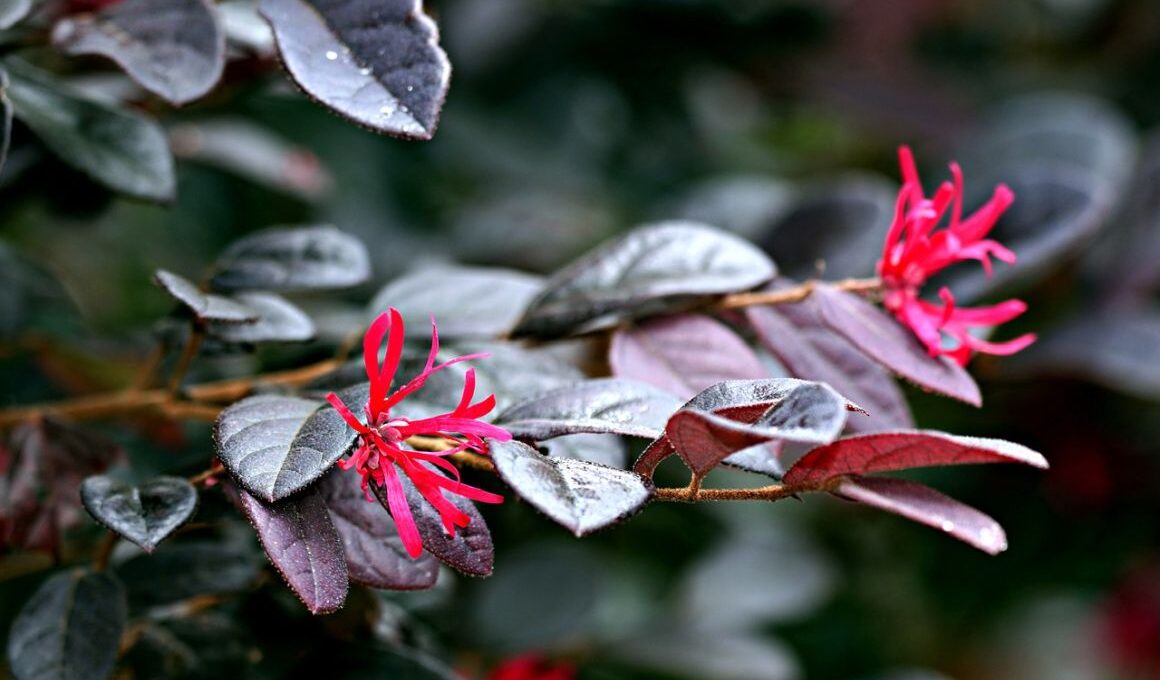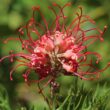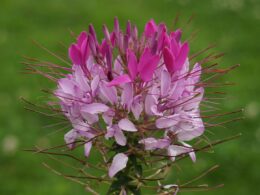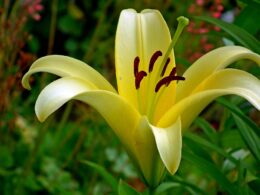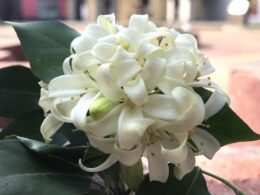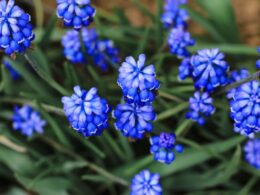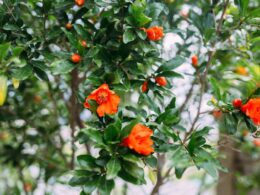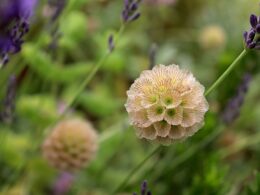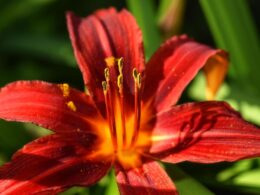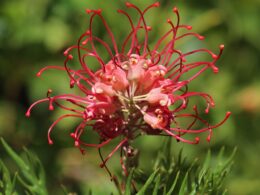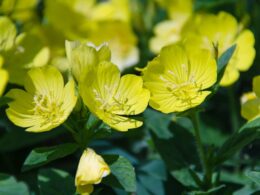What Is the Chinese Fringe Flower? Names, Characteristics and Origin
The Chinese fringe flower (Loropetalum chinense) is a small shrub that is native to China and Japan. It’s a member of the witch hazel family (Hamamelidaceae). It gets its name from its fringed flowers, which bloom in shades of pink or white. Other common names are loropetalum and strap flower.
The shrub can grow up to 12 feet tall and 8 feet wide. White-blooming varieties have green leaves, while showy pink petals are accompanied by burgundy, bronze or olive-green foliage.
The Chinese fringe flower is a popular ornamental plant, and it is often used in landscaping. Its leaves, flowers, and roots are all used in traditional Chinese medicine. The plant is tolerant of both sun and shade, and it can thrive in a variety of soil types. It’s relatively low-maintenance, and it doesn’t require much pruning or fertilizer.
Is Loropetalum Evergreen?
Yes. The Chinese fringe flower is an evergreen shrub, which means it will retain its leaves year-round. In warmer climates, it may lose its leaves during periods of drought. Like other shrubs, it’s a perennial, meaning it will live for several years.
What Types of Chinese Fringe Flowers Are There?
There are over 30 cultivars of Chinese fringe flowers, and they’re often named for their color. Some of the most popular include:
- ‘Crimson Fire’ – this variety has deep pink flowers and burgundy leaves. It grows to be about 4 feet tall and 5 feet wide.
- ‘Sizzling Pink’ – this plant has hot pink flowers and dark green leaves. It grows up to 6 feet tall and can spread up to 5 feet in width.
- ‘Ever Red’ – this cultivar has, you guessed it, deep red flowers and burgundy leaves. It can grow to be up to 6 feet tall and wide.
- ‘Carolina Moonlight’ – this plant has white flowers and pale green leaves. It can reach up to 6 feet in height and width.
- Jazz Hands Dwarf White® – this is a dwarf variety that only grows to be about 3 feet tall and wide. It has white flowers and green leaves.
- Jazz Hands Variegated® – this plant has white and pink flowers, and its leaves are variegated (meaning they have multiple colors). In fact, it’s the first ever variegated Chinese fringe flower. It can grow to be about 6 feet tall and wide.
Can you imagine one of them in your own garden? With so many sizes and colors to choose from, you’re sure to find the perfect plant for your landscape.
Where Do Chinese Fringe Flowers Grow Best?
As we mentioned, the Chinese fringe flower is native to China and Japan. It grows best in USDA hardiness zones seven through nine, which includes most of the southern United States. The plant prefers warm climates and won’t tolerate frost well. If you live in a colder climate, you can grow the plant in a container and bring it indoors during the winter.
How Fast Does Loropetalum Grow?
The Chinese fringe flower is a medium- to fast-growing plant. It grows about a foot per year, but some varieties can double that. So, if you’re looking for a plant that will quickly fill in an empty spot in your landscape, this is a good option.
How to Plant and Care for a Chinese Fringe Flower Shrub
Now that you know all about this lovely plant, let’s talk about how to care for it. The good news is, Chinese fringe flowers are relatively low-maintenance. Here are some tips to help you get started:
- Choose a planting site that gets partial shade, preferably shifting or high shade. Loropetalum can also tolerate full sun if you can’t provide shade.
- The soil should be acidic, moist, rich in organic matter, and well-drained. Once established, these plants are drought-tolerant.
- Dig a hole that’s twice as wide as the root ball and just as deep.
- Plant your shrub at the same depth it was in the pot.
- Backfill the hole with soil, and water deeply to settle the roots.
- Mulch around the plant to help keep the roots cool and moist.
- Fertilize in early spring with an acidic fertilizer.
- Pruning is not necessary, but you can trim back the plant after it blooms to keep it tidy and encourage new growth.
Chinese fringe flowers are relatively pest and disease-resistant. However, they can be susceptible to root rot if the soil is too wet. Watch for signs of wilting or yellowing leaves, and make sure the plant has good drainage.
How Are Chinese Fringe Flowers Used in Landscaping?
Besides being used as standalone specimen plants, Chinese fringe flowers are also often planted in mass for a dramatic effect. They make great foundation plants, hedges, and privacy screens. They can also be used in container gardens or as groundcover. No matter how you choose to use them, these beautiful shrubs are sure to add some color and interest to your landscape.
Is Chinese Fringe Flower Poisonous to Dogs and Cats?
The Chinese fringe flower is non-toxic to dogs and cats. However, as with any plant, it’s always a good idea to keep an eye on your pets when they’re around the shrub. If you notice them chewing on the leaves or flowers, take them to the vet just to be safe – some pets can get an upset stomach from eating this plant.
Enjoy Loropetalum Plants All Year Round
With proper care, your Chinese fringe flower will thrive for years to come. Enjoy its beautiful flowers in the spring, and its colorful foliage all season long. Thanks for reading! We hope you enjoyed learning about this fascinating plant. If you have any more tips, share them in the comments below.





